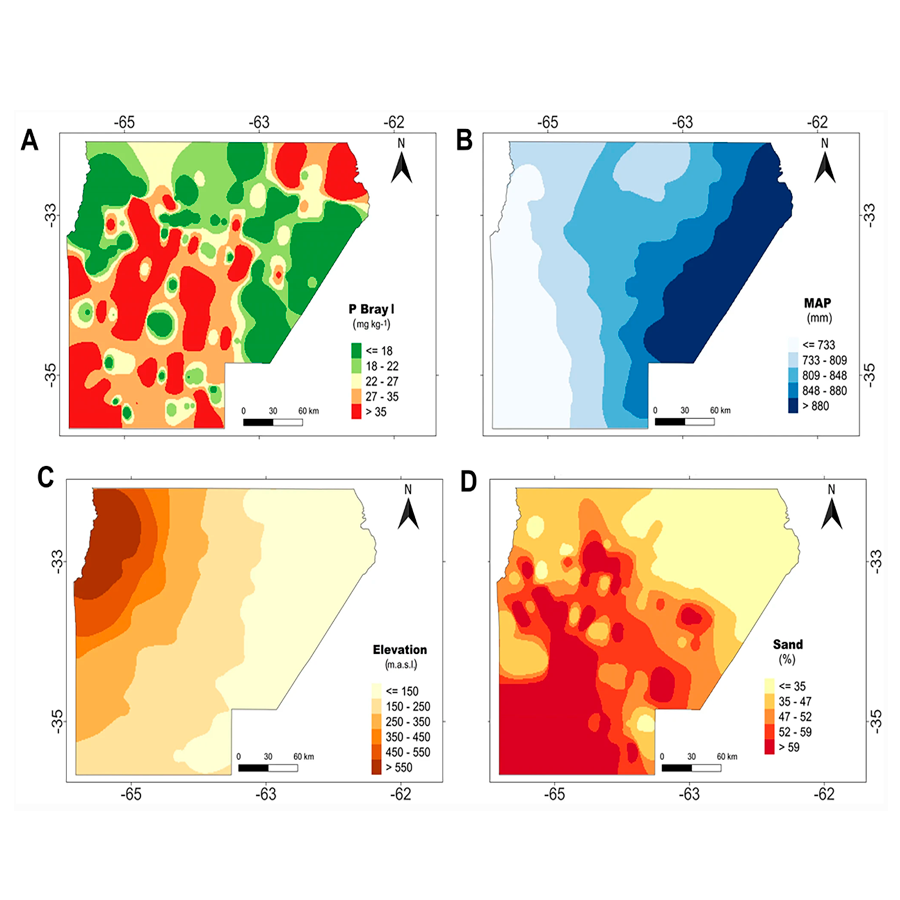Mycorrhiza, 32, 425–438, 2022
Abstract
Climate change, the shortage of fertilizers and reduced land for cultivation have drawn attention to the potential aid provided by soil-borne organisms. Arbuscular mycorrhizal fungi (AMF) offer a wide range of ecosystem benefits and hence, understanding the mechanisms that control AMF occurrence and maintenance is essential for resilient crop production. We conducted a survey of 123 soybean fields located across a 75,000-km2 area of Argentina to explore AMF community composition and to quantify the impact of soil, climate, and geographical distance on these key soil organisms. First, based upon morphological identification of spores, we compiled a list of the AMF species found in the studied area and identified Acaulospora scrobiculata and Glomus fuegianum as the most frequent species. G. fuegianum abundance was negatively correlated with precipitation seasonality and positively correlated with mean annual precipitation as well as mycorrhizal colonisation of soybean roots. Second, we observed that species richness was negatively correlated with soil P availability (Bray I), clay content and mean annual precipitation. Finally, based on partitioning variation analysis, we found that AMF exhibited spatial patterning at a broad scale. Therefore, we infer that geographical distance was positively associated with spore community composition heterogeneity across the region. Nevertheless, we highlight the importance of precipitation sensitivity of frequent species, overall AMF richness and community composition, revealing a crucial challenge to forthcoming agriculture considering an expected change in global climate patterns.
Maps of selected explanatory variables
